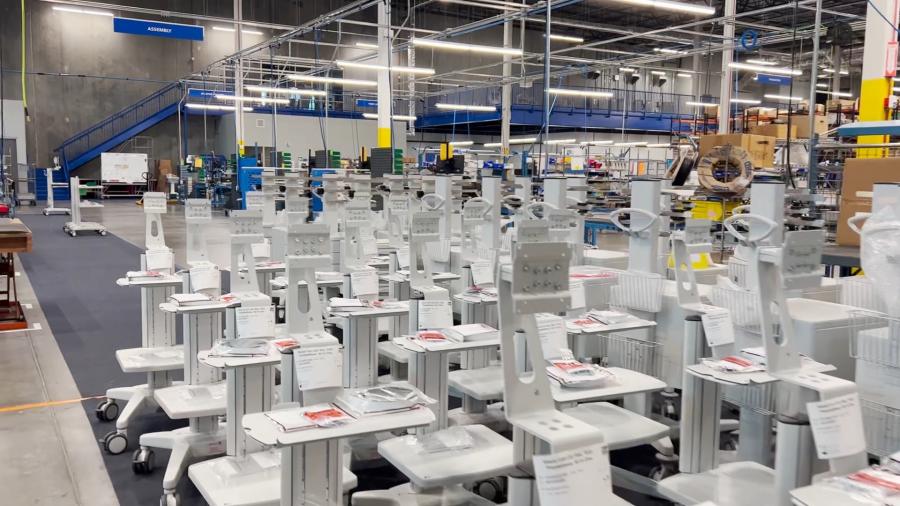Unless a medical device is in continuous use or too large to move, it is typically mobile. The way these devices are transported, the positioning of their user interface, and the storage possibilities they offer for accessories and supplies influence the way the user experiences the device.
As emphasis on lean and dynamic start-ups increases, there is a push to quickly put out a minimum viable product (MVP). When developing such an early-stage product, companies often overlook mobility elements as they focus on their core technology. There is an alternative. Mobility elements can be handled well within the cost-effective, time-saving context of building an MVP.
THE LEAN STARTUP CONCEPT
Eric Ries' widely read 2011 book, The Lean Startup, changed the way entrepreneurs and innovators think about innovation. One of the book’s central ideas is the importance of building something quickly and getting it into customers’ hands to uncover their needs and validate the most fundamental aspects of the product and business model. Elements of scaling, such as logos, logistics models, and organizational structure, are put in the background as the company focuses on the basic question of whether the product works, and will customers pay for it. Testing and iteration begin as soon as possible.
While the Lean Startup idea was conceptualized for the startup world, it also gained traction within the development organizations of large corporations. One successful example is GE’s “FastWorks” initiative (see How GE Implemented FastWorks to Act More Like a Startup - NOBL Academy).
MINIMUM VIABLE PRODUCT
The first product you take to your customer site should be an MVP. This is the product with just enough features to be functional for early customers, who can then give feedback that will be used for progressive development. Early customer interactions should be designed to reveal not only technology issues, but also usability issues. In the medical device industry, the IEC 62366 standard’s usability requirements are intensifying the spotlight on this key area of development.
LinkedIn founder Reid Hoffman has famously said, “If you aren’t embarrassed by the first version of your product, you’ve launched too late.” This comment emphasizes the advantages of moving fast and not striving for perfection. At the same time, if you can add quality to an MVP without extensive additional effort, you increase the chances of customer satisfaction.
If a medical device needs to be mobile, incorporating a cart into your MVP or other early-stage builds can be an easy way to not only ensure that it can be moved from place to place, but also to uncover important user needs and reactions. When users initially encounter your device, their first impression is of the product as a physical object. They are putting their hands on the device, and the effect should communicate quality.
iTD’s intelligently-engineered, modular cart platforms can be readily configured in myriad ways to support the use model of your device. The components are already designed and tooled, so a “custom” solution can be assembled entirely from parts that are proven in the field and can be rapidly produced. The platforms eliminate the need to design and prototype a cart from scratch and allow you to add value to early versions of your product cost effectively and with minimal effort.
Working with a specialized manufacturer of the mobility component of your system early in the development process gives you the opportunity to learn from a team that solves medical device usability problems on a daily basis. iTD’s engineering focuses on the “touchpoint”—where humans interact physically with medical devices. We keep this concentration both as we develop our own branded products sold direct to hospitals and as we work in partnership with medical device manufacturers ranging from startups to the largest global players.
CONCLUSION
We hope the time to build your MVP comes quickly. Be assured that iTD’s manufacturing plant in Odessa, Florida, has the capability to execute rapidly. In addition to our extensive set of standard cart components, we are vertically integrated into CNC machining, sheet metal fabrication, powder coating, and assembly. While some of your product’s more detailed DFM—design for manufacturing—considerations may be better treated after the MVP stage, working with a manufacturer that can see you all the way through to full production ramp does allow these issues to be identified up front. After facilitating your rapid prototyping, we can accompany you through additional development cycles. We can be your partners throughout the progression of your product development, making it easy to advance and refine elements of your device’s mobility.

